The world is becoming increasingly interconnected, and the role of optical fiber cables in powering the future of communication cannot be overstated. These hair-thin, glass-based transmission lines have revolutionized the way we transmit data.
Our world-class products and solutions are connecting the world effortlessly enabling remote collaboration and endless possibilities. Our application-based and customized cable solutions cater to high-bandwidth applications of data centers, global internet companies, ISPs and telcos, and citizen network services making the most of AI, 5G and heavy data transmission applications. STL offers a wide range of cables and supports network builders in more than 100 countries across the globe. Our Optical Cable Portfolio includes Aerial, Underground, Micro duct, Ribbon, Indoor Outdoor, Last Mile connectivity, and special application cables.
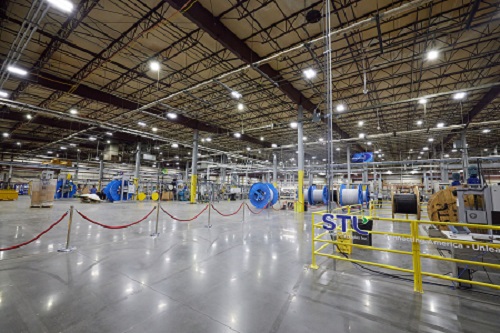
Since 1995, STL has been connecting the world with the best optical fiber cable solutions. From the first optical fiber plant in India, STL has state-of-the-art production sites across Asia, Europe, North America, and South America.
As one of the industry’s leading fiber optic manufacturers with a 25+ year innovation track record and customer base in more than 100 countries, STL’s fiber optic solutions are preferred by network engineering and operations teams around the world.
Experience the excitement of a future where connectivity knows no limits, all made possible by the reliable and high-performance optical fiber cables we manufacture.
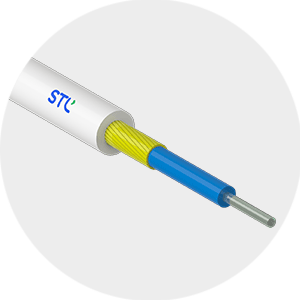
Tight Buffer drop cables
These versatile cables serve indoor, outdoor, and riser applications, offering reliability and flexibility in connectivity. Additionally, the single-sheath, single-steel-armored construction enables direct burial, duct, and trenching installations, making them ideal for last-mile connectivity needs.
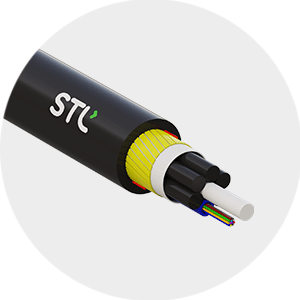
MLT Aerial
These aerial installation cables boast lightweight yet durable design, offering robust water protection and high tensile support. Featuring multi-tube construction with ripcords for easy access, dry water-blocking technology ensures a gel-free core. With a removable thermoplastic jacket, these cables ensure reliable performance across various network architectures, combining high tensile and crush resistance for lasting durability.
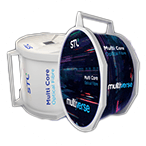
Multiverse- Multi core fibre & cables
Multiverse – Multi-Core Fibre & Cable is STL’s next-generation solution designed to meet the ever-growing demand for faster, denser, and more efficient networks. Instead of relying on traditional single-core fibres, Multiverse brings multiple optical paths together inside a single strand. This innovation means higher capacity in a smaller footprint, making networks easier to build, lighter to manage, and more sustainable for the future. With Multiverse, operators and enterprises can expand their network capabilities without digging new ducts or adding bulk. It is built for cloud computing, data centers, 5G, IoT, and future digital applications that require enormous amounts of bandwidth.
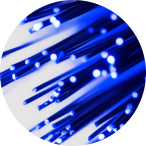
Sensory Fiber Cable
These cables are used for continuous sensors, monitoring temperature, vibration, and other factors, offering advantages that include
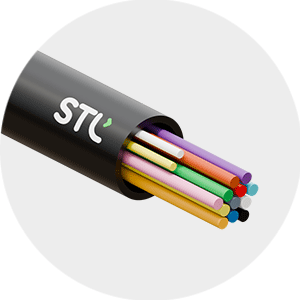
IBR drop cables
These cables offer high fiber density in a compact, flat design, perfect for space-constrained overhead installations. With a space-saving design, they reduce clutter on poles and buildings. Mass fusion splicing enables quick connection of multiple fibers within the IBR, optimizing installation efficiency and reliability.
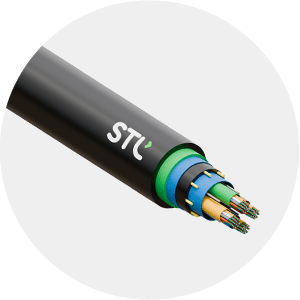
IBR Direct Buried
These cables combine robust performance across installations with high-count mass fusion splicing efficiency. Featuring color-coded ribbon units and gel-free technology ensure reliability against water ingress. UV-protected, lightweight, and flexible, they're easy to handle and install, guaranteeing long-term reliability and optimizing installation time.
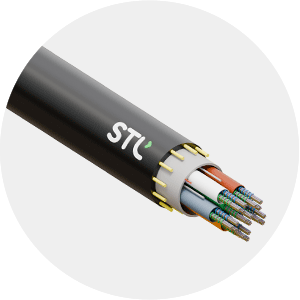
IBR Duct Cables
These cables, with an innovative ribbon bond design, achieve dense fiber packing and a smaller diameter, perfect for high-growth, high-bandwidth applications like data centers and outside plant setups. Bend-insensitive fiber enhances power budget and serviceability, while the unique cable design allows versatile deployment methods, offering flexibility across diverse installation environments.
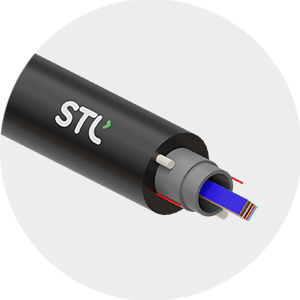
Flat Ribbon Drop Cables
These Cables offer high fiber density in a compact design, ideal for tight overhead spaces. They enable mass fusion splicing, saving time and labor. Their minimal footprint on poles enhances aesthetics, making them perfect for space-constrained installations where efficiency and appearance matter.
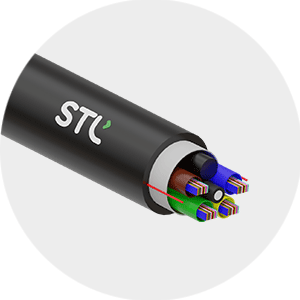
Flat ribbon direct buried Cables
These specialized flat ribbon cables tailored for direct burial, boasting thicker and stronger jackets for enhanced crush resistance. They incorporate moisture-resistant materials to prevent water ingress and feature reinforced elements for improved handling, ensuring reliability in challenging environments.
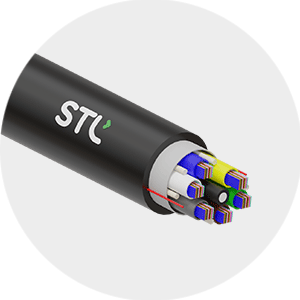
Flat ribbon Duct Cables
These cables offer an outstanding solution for demanding high-growth, high-bandwidth communications applications like data centers, equipment connections within cabinets and outside plant applications.
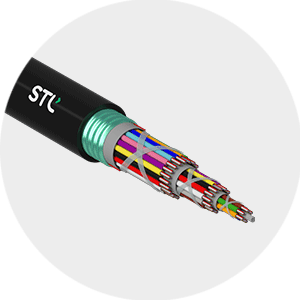
MLT Buried
These cables, suitable for outside plant (OSP) applications, offer versatile installation options such as duct pulling, blowing, or direct burial, ensuring reliable performance in harsh environments. Featuring S-Z stranded loose tubes and water-blocking gel, they boast dual jackets for durability and easy installation. Equipped with water-blocking technology, flat FRP armoring, and resistance to termites, these cables provide long-term reliability. Ripcords allow quick mid-span access during installation.
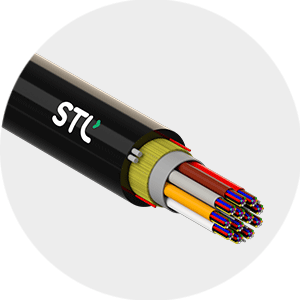
Micromodule Retractable
Cables designed for outdoor installation into ducts feature anti-buckling properties and are enveloped in an outer sheath, enhancing robustness and installation ease.
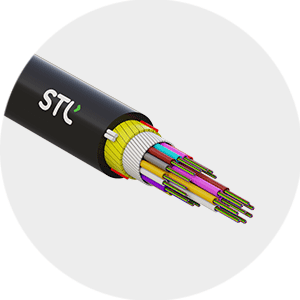
Micromodule Aerial Cables
These cables combine high fiber capacity with lightweight construction for cost-effective aerial installations. They're more economical than traditional cables, thanks to their smaller size and potentially lower weight. Made from soft, flexible elastomeric material, they offer excellent crush protection, ensuring reliability and durability.

MM Duct
Micromodule duct cables are a new generation of fiber optic cables designed on micro-module technology to create an optimized design suitable for use in Duct/Aerial scenarios.
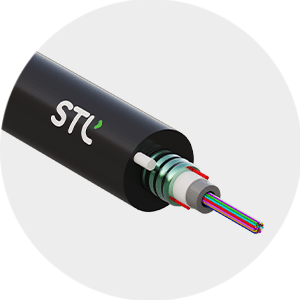
UT Direct Buried
These cables are fiber optic workhorses designed for seamless integration directly into the ground. Encased in a tough outer jacket, these cables safeguard the delicate optical fibers within from moisture, impact, and other environmental threats.
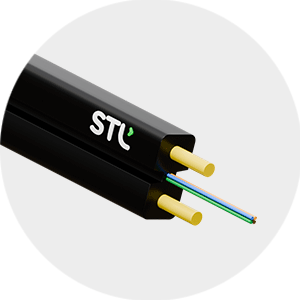
CFC Drop Cables
Designed for high-performance FTTH (Fiber-to-the-Home) solutions, featuring single mode/bend-sensitive fibers protected by two strength members and an outer sheath for robustness. Their lightweight design and easy stripping characteristics make them ideal for quick and convenient installation in fiber optic networks.
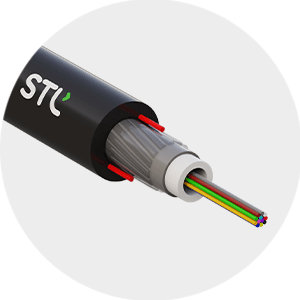
UT Drop Cables
Offer enhanced performance for FTTH solutions, featuring bend-insensitive fibers and robust construction for indoor/outdoor use. They are designed for easy installation and termination, with industry-standard connectors compatible due to their standard fiber size. Additionally, their LSZH jackets ensure environmental safety, making them ideal for various network segments.
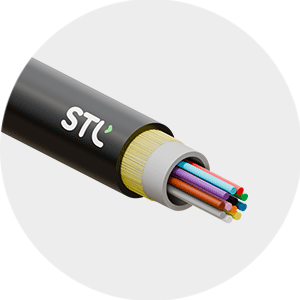
UT Microduct
Designed for easy installation within pre-existing micro-ducts, making them ideal for FTTx applications like bringing fiber internet directly to homes. The installation process involves blowing the cables into the micro-ducts, speeding things up compared to traditional methods. An additional benefit is their dielectric design, which means they can be placed safely near high-voltage lines without conducting electricity.
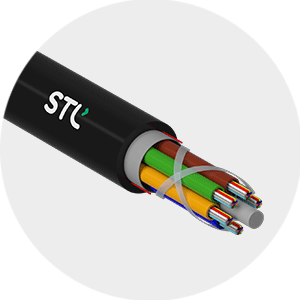
MLT Duct
MLT Duct: Designed for indoor/outdoor and outside plant applications, offer robust performance for conventional duct installations. Featuring a loose tube structure with gel-filled buffer tubes, they ensure longitudinal water protection. Glass roving yarns enhance tensile strength and rodent protection, while an LSZH or thermoplastic outer jacket provides mechanical and environmental protection. These Class Eca-rated cables are suitable for pulling or air-blowing techniques, making them versatile solutions for diverse installation needs.
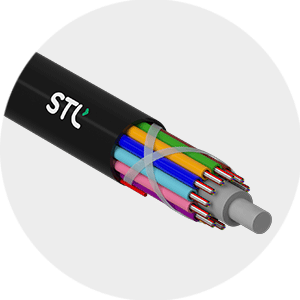
MLT Microduct
MLT Microduct optical fiber cables are robust solutions for micro duct and outside plant installations. They have stranded micro loose tubes and water blocking gel, they ensure durability and reliability. The addition of a thermoplastic dual jacket in certain models enhances resilience and ease of installation. Overall, these cables offer a comprehensive solution for high-performance optical fiber networks, meeting modern connectivity demands.

MLT Aerial
These aerial installation cables boast lightweight yet durable design, offering robust water protection and high tensile support. Featuring multi-tube construction with ripcords for easy access, dry water-blocking technology ensures a gel-free core. With a removable thermoplastic jacket, these cables ensure reliable performance across various network architectures, combining high tensile and crush resistance for lasting durability.

MLT Buried
These cables, suitable for outside plant (OSP) applications, offer versatile installation options such as duct pulling, blowing, or direct burial, ensuring reliable performance in harsh environments. Featuring S-Z stranded loose tubes and water-blocking gel, they boast dual jackets for durability and easy installation. Equipped with water-blocking technology, flat FRP armoring, and resistance to termites, these cables provide long-term reliability. Ripcords allow quick mid-span access during installation.

MLT Microduct
MLT Microduct optical fiber cables are robust solutions for micro duct and outside plant installations. They have stranded micro loose tubes and water blocking gel, they ensure durability and reliability. The addition of a thermoplastic dual jacket in certain models enhances resilience and ease of installation. Overall, these cables offer a comprehensive solution for high-performance optical fiber networks, meeting modern connectivity demands.

MLT Duct
MLT Duct: Designed for indoor/outdoor and outside plant applications, offer robust performance for conventional duct installations. Featuring a loose tube structure with gel-filled buffer tubes, they ensure longitudinal water protection. Glass roving yarns enhance tensile strength and rodent protection, while an LSZH or thermoplastic outer jacket provides mechanical and environmental protection. These Class Eca-rated cables are suitable for pulling or air-blowing techniques, making them versatile solutions for diverse installation needs.

UT Microduct
Designed for easy installation within pre-existing micro-ducts, making them ideal for FTTx applications like bringing fiber internet directly to homes. The installation process involves blowing the cables into the micro-ducts, speeding things up compared to traditional methods. An additional benefit is their dielectric design, which means they can be placed safely near high-voltage lines without conducting electricity.

UT Drop Cables
Offer enhanced performance for FTTH solutions, featuring bend-insensitive fibers and robust construction for indoor/outdoor use. They are designed for easy installation and termination, with industry-standard connectors compatible due to their standard fiber size. Additionally, their LSZH jackets ensure environmental safety, making them ideal for various network segments.

CFC Drop Cables
Designed for high-performance FTTH (Fiber-to-the-Home) solutions, featuring single mode/bend-sensitive fibers protected by two strength members and an outer sheath for robustness. Their lightweight design and easy stripping characteristics make them ideal for quick and convenient installation in fiber optic networks.

UT Direct Buried
These cables are fiber optic workhorses designed for seamless integration directly into the ground. Encased in a tough outer jacket, these cables safeguard the delicate optical fibers within from moisture, impact, and other environmental threats.

MM Duct
Micromodule duct cables are a new generation of fiber optic cables designed on micro-module technology to create an optimized design suitable for use in Duct/Aerial scenarios.

Micromodule Aerial Cables
These cables combine high fiber capacity with lightweight construction for cost-effective aerial installations. They're more economical than traditional cables, thanks to their smaller size and potentially lower weight. Made from soft, flexible elastomeric material, they offer excellent crush protection, ensuring reliability and durability.

Micromodule Retractable
Cables designed for outdoor installation into ducts feature anti-buckling properties and are enveloped in an outer sheath, enhancing robustness and installation ease.

Tight Buffer drop cables
These versatile cables serve indoor, outdoor, and riser applications, offering reliability and flexibility in connectivity. Additionally, the single-sheath, single-steel-armored construction enables direct burial, duct, and trenching installations, making them ideal for last-mile connectivity needs.

Flat ribbon Duct Cables
These cables offer an outstanding solution for demanding high-growth, high-bandwidth communications applications like data centers, equipment connections within cabinets and outside plant applications.

Flat ribbon direct buried Cables
These specialized flat ribbon cables tailored for direct burial, boasting thicker and stronger jackets for enhanced crush resistance. They incorporate moisture-resistant materials to prevent water ingress and feature reinforced elements for improved handling, ensuring reliability in challenging environments.

Flat Ribbon Drop Cables
These Cables offer high fiber density in a compact design, ideal for tight overhead spaces. They enable mass fusion splicing, saving time and labor. Their minimal footprint on poles enhances aesthetics, making them perfect for space-constrained installations where efficiency and appearance matter.

IBR Duct Cables
These cables, with an innovative ribbon bond design, achieve dense fiber packing and a smaller diameter, perfect for high-growth, high-bandwidth applications like data centers and outside plant setups. Bend-insensitive fiber enhances power budget and serviceability, while the unique cable design allows versatile deployment methods, offering flexibility across diverse installation environments.

IBR Direct Buried
These cables combine robust performance across installations with high-count mass fusion splicing efficiency. Featuring color-coded ribbon units and gel-free technology ensure reliability against water ingress. UV-protected, lightweight, and flexible, they're easy to handle and install, guaranteeing long-term reliability and optimizing installation time.

IBR drop cables
These cables offer high fiber density in a compact, flat design, perfect for space-constrained overhead installations. With a space-saving design, they reduce clutter on poles and buildings. Mass fusion splicing enables quick connection of multiple fibers within the IBR, optimizing installation efficiency and reliability.

Sensory Fiber Cable
These cables are used for continuous sensors, monitoring temperature, vibration, and other factors, offering advantages that include

Multiverse- Multi core fibre & cables
Multiverse – Multi-Core Fibre & Cable is STL’s next-generation solution designed to meet the ever-growing demand for faster, denser, and more efficient networks. Instead of relying on traditional single-core fibres, Multiverse brings multiple optical paths together inside a single strand. This innovation means higher capacity in a smaller footprint, making networks easier to build, lighter to manage, and more sustainable for the future. With Multiverse, operators and enterprises can expand their network capabilities without digging new ducts or adding bulk. It is built for cloud computing, data centers, 5G, IoT, and future digital applications that require enormous amounts of bandwidth.
Explore our comprehensive range of Optical Fiber Cables, designed to meet diverse networking needs. Our portfolio includes Multi Loose Tube, Unitube/Central Fiber Core, Micromodule, Tight Buffer, Flat Ribbon, Intermittently Bonded Ribbon, and Specialty cables. Each cable type is engineered for optimal performance across various applications, ensuring high-speed data transmission and reliability. Browse our catalogue to find the ideal solution for your networking requirements.
Elevate your connectivity with our trusted Optical Fiber Cable offerings.

Fibre optics refers to the technology and the medium associated with the transmission of data as light pulses along a ultrapure strand of glass, which is a thin as a human hair.

Due to increasing data demands, there's a dire need to create new fibre deep networks and data centres, which would encourage faster 5G and FTTH adoption.

The world is getting smarter and connected. Converged and high bandwidth application networks have unique challenges which make high performance connectivity a top priority.
An optical fiber network uses infrared light pulses to transport information over optical fiber from one location to another. The carrier wave that makes up light is modified to transmit information. Broadband connections that use fiber-optic technology can provide lag-free rates of up to 940 megabits per second (Mbps). Fiber-optic internet is also known as "fibre" internet or simply "fiber." The system makes use of fiber-optic cable, which astonishingly has a data transmission rate of up to 70% of the speed of light. Additionally, fiber-optic cables are less vulnerable to extreme weather than other older cable types, reducing disruptions. Additionally, it successfully withstands electrical interference.
Based on the mode of propagation of light, optical fiber cables have two different types.
a. Multimode Optical Fiber Cable: At wavelengths of 850 nm or 1300 nm, multimode fiber (MMF) enables the simultaneous transmission of several data streams.
b. Singlemode Optical Fiber Cable: Singlemode fiber (SMF) has a single light route that can traverse great distances and has a significantly smaller core size.
Based on materials, optical fiber cables are divided into two types.
a. Plastic Optical Fiber Cable: The main substance for light transmission is poly(methyl methacrylate).
b. Glass Optical Fiber Cable: It is made out of a mass of glass fibers. Light travels through each individual glass fiber from the light source to the fiber's opposite end.
Lastly, based on the refractive index, optical fiber cable is divided into two different types.
a. Step-Index optical fiber cable: Step-index fibers feature a symmetrical core with one index of refraction and a lesser index of refraction on the uniform cladding. The simplest type of optical fiber has a cylindrical silica glass core that is encircled by cladding with a lower refractive index than the core.
b. Graded-Index optical fiber cable: As the radial distance from the fiber axis rises, the optical fiber's refractive index falls. Graded-index fibers are often utilized in the telecom industry by grading the index of refraction of the core such that it gradually tapers between both the core center and the cladding. It lowers multimode dispersion.
a. Based on construction, Multimode permits many concurrent light modes, whereas single-mode fiber is meant to transport a single light mode. The bandwidth, signal stability, and signal transmission distance are all impacted by this disparity.
b. Based on bandwidth, Single mode cables may accommodate more powerful, brighter light sources with less attenuation. Comparatively, Multimode relies on the transmission of several light modes with increased attenuation and lower brightness.
c. Based on transmission distance, With a typical single-mode connection, single-mode fiber can transport data across short and long distances of up to 10 km (6.2 miles). On the other hand, the maximum transmission distance for multimode ranges from 300 to 550 meters.
The fastest and most dependable internet service right now is fiber optic. Users may access more media types and larger file sizes more quickly because of the fiber's quicker download and upload rates. Tech experts now choose it over the 5G network because it is quicker and more dependable. A fiber network can easily meet all of your internet demands, thanks to speeds up to 100 times faster than standard broadband. The bandwidth of fiber optics is 1 GB/s. That's 10-20 times faster than the 50-100 Mbps cable that most of us are familiar with today.
The technique that sends information as light pulses via a glass or plastic fiber is known as fiber optics, often called optical fiber. These glass fibers can range in quantity from a few to several hundred in a fiber optic cable. The glass fiber core is encircled by a second glass layer known as cladding. A few to hundreds of optical fibers may be found inside the plastic sheath of a fiber-optic cable. They transmit data signals in the form of light and travel hundreds of miles more quickly than those used in conventional electrical cables. Optic cables and optical fiber cables are other names for them.
Please wait while you are redirected to the right page...

"We want to lend speed, efficiency and innovation to the UK’s network build outs and seize the opportunity to become the second-largest altnet in the UK in 2024. We are energised by the vision of a connected UK and look forward to partnerships founded on this common ethos. STL’s purpose of transforming billions of lives aligns very well with ours, and their integrated and innovative portfolio on the optical side fits the bill for us."
Netomina